An evening stroll in Porvoo’s national urban park
Usually the first thing that comes to mind when you think of Porvoo is the old town with is it’s pretty wooden and stone houses. However, a stone’s throw away from the narrow cobblestone streets, you can take a relaxing evening walk surrounded by nature. Looking at the city’s outdoor map, I noticed that I would end up under a kilometre away from Porvoo’s bus station, which is still very close to downtown.
Those who wish to break a sweat can opt for the longer route (it extends from Old Porvoo 10km South and 8km East), but I was more interested in exploring what the immediate landscapes had to offer.
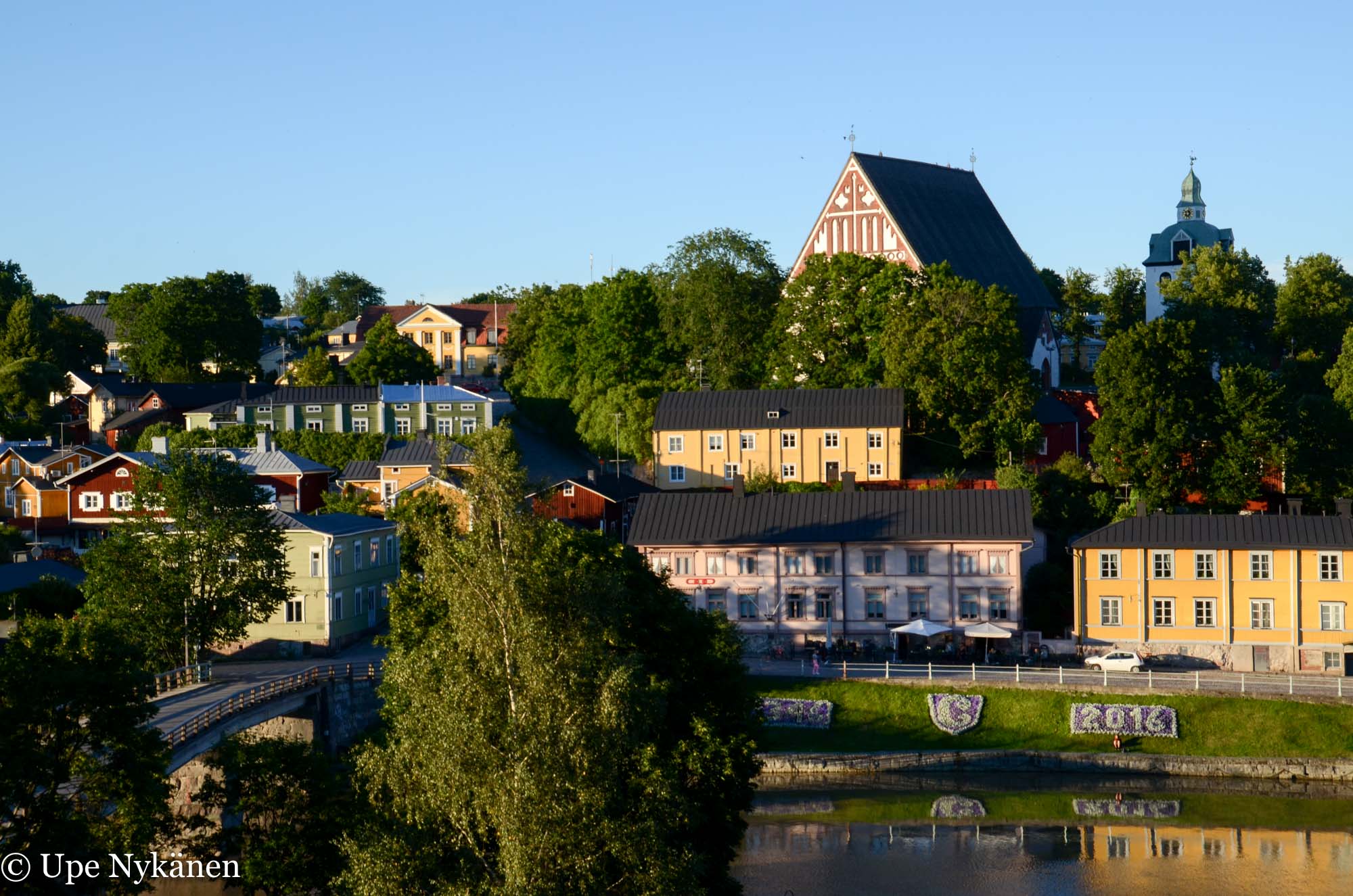
I could have been lazy and chosen the even path from Porvoo’s riverside towards the south, from either side of the river. But I’ve always been drawn to looking at views from higher up, so I walked over the bridge on the west bank and soon found an inviting path up to Näsi Hill. It was still brimming with nature’s edible offerings, so I popped blueberries, wild strawberries and raspberries in my mouth from the side of the path. Long live berry season and Everyman’s Rights.
From under the pine trees opened out a beautiful view of the evening sun illuminating Old Porvoo with its cathedral and the riverside houses reflected in the stilly calm Porvoo river. I wondered, what this landscape looks like in autumn, when the green of the trees has given way to yellow and other autumnal colours…
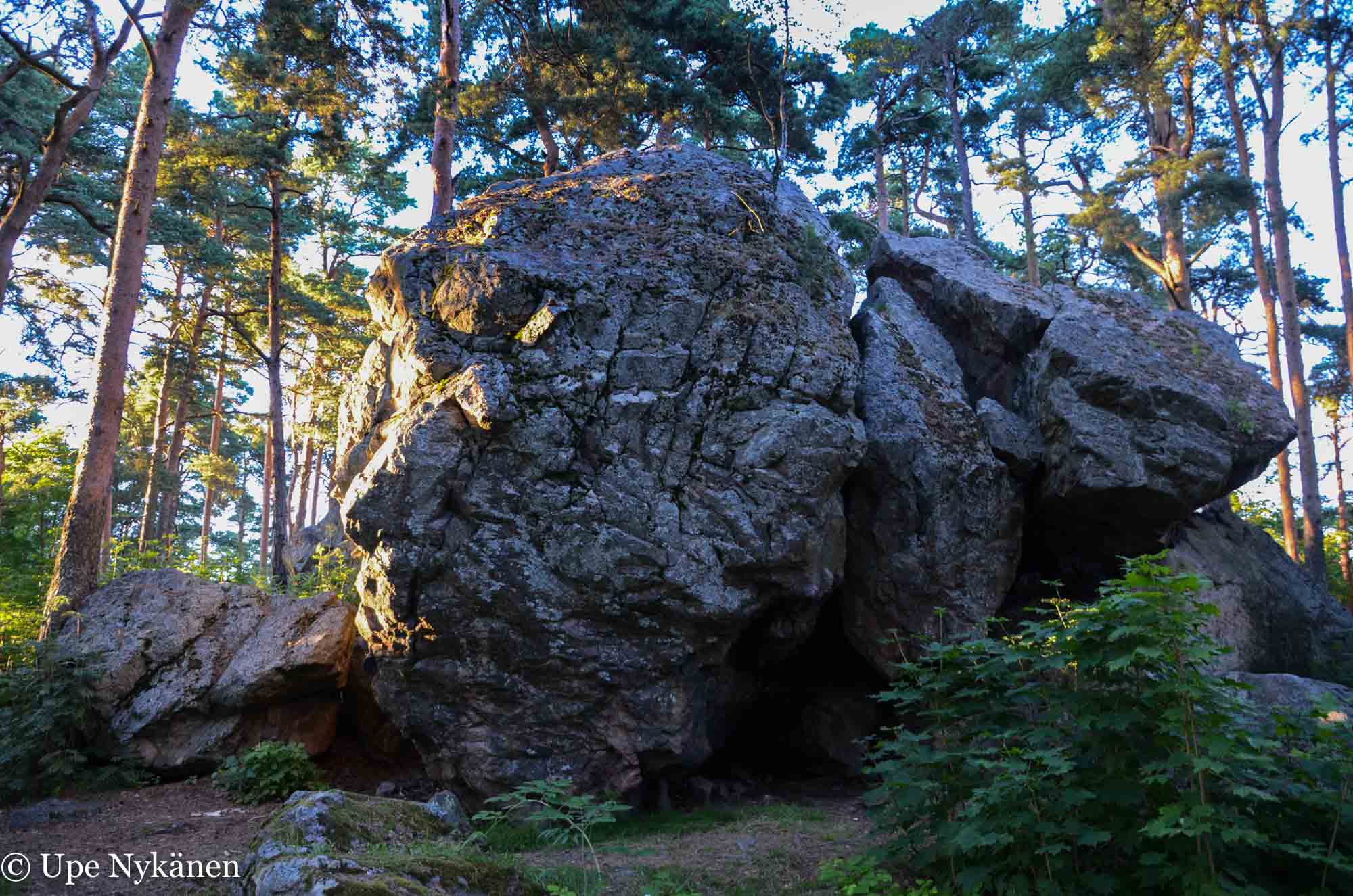
I walked from the slopes of Näsi hill onto the next path heading south and stopped every now and then to peer through the trees down to Porvoo river. Soon red warehouse buildings flashed between the pine branches. It was from this slope that Albert Edelfelt composed and drafted his painting, ‘View from Porvoo’s Näsi Hill’, the draft of which can be found at the Ateneum. The final painting lives at the Hermitage in St Petersburg.
A little way along from the vantage point that was marked on the map, I could see almost all of Porvoo’s new city centre. I have to admit, it doesn’t quite have the same appeal as Old Porvoo’s vista. And so I turned back, towards the top of Näsi hill, where Näsi’s rock was waiting for me. There was something celebratory about this boulder hurled here by the ice age, especially while the sun’s rays hit it so gloriously. From behind this impressive rock, the buildings of Näsi manor’s courtyard revealed themselves.
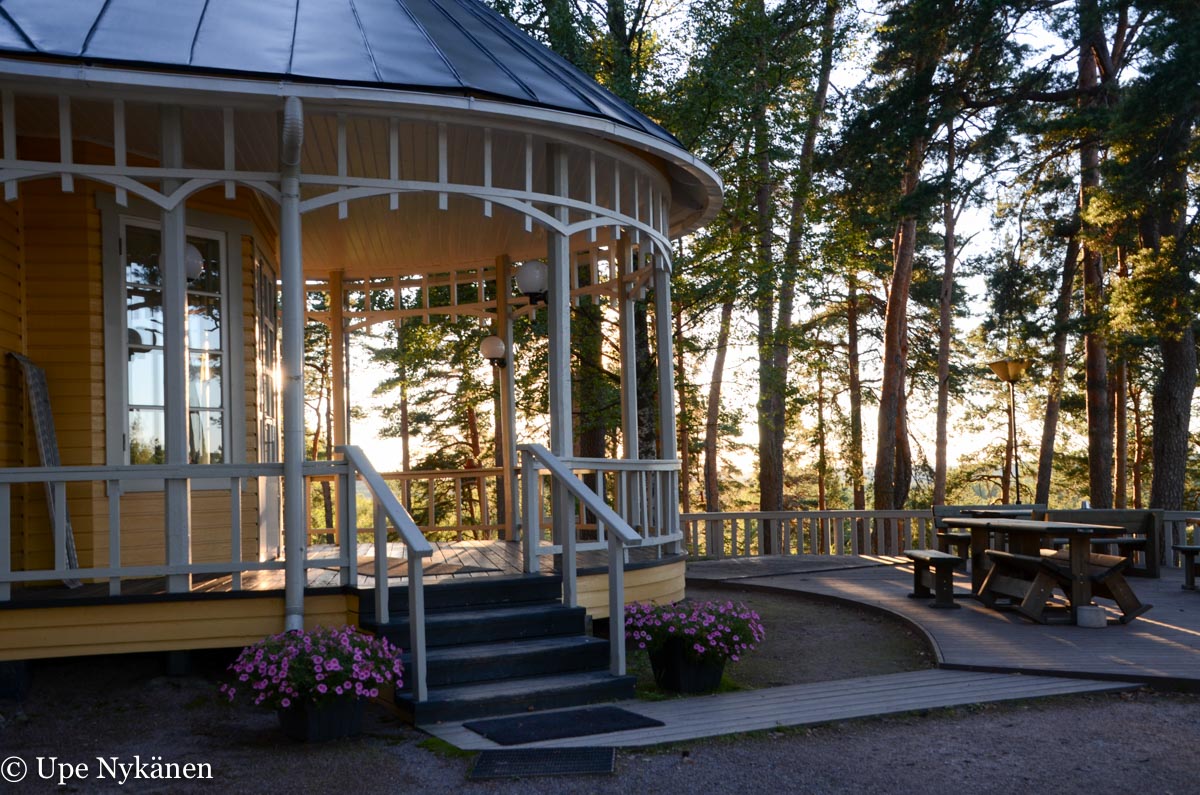
My attention was next drawn to a beautiful yellow building, whose semicircular terrace would have had me stopping for evening tea, if there was such a thing on offer. Unfortunately there wasn’t, so Honkala (Furunäs) was quiet this evening. But it would have been nice to sit down and enjoy the view of the urban park…. The scenic restaurant’s history dates back to the beginning of the 1900s, when it was known by the name of Turisthyddan.
So then what? Just a few hundred metres away was a cemetery, where you could find, for example, Johan Ludvig Runeberg and his wife Fredrika’s grave, but I wanted to enjoy the evening sun’s final rays nearer the river. So down I went.
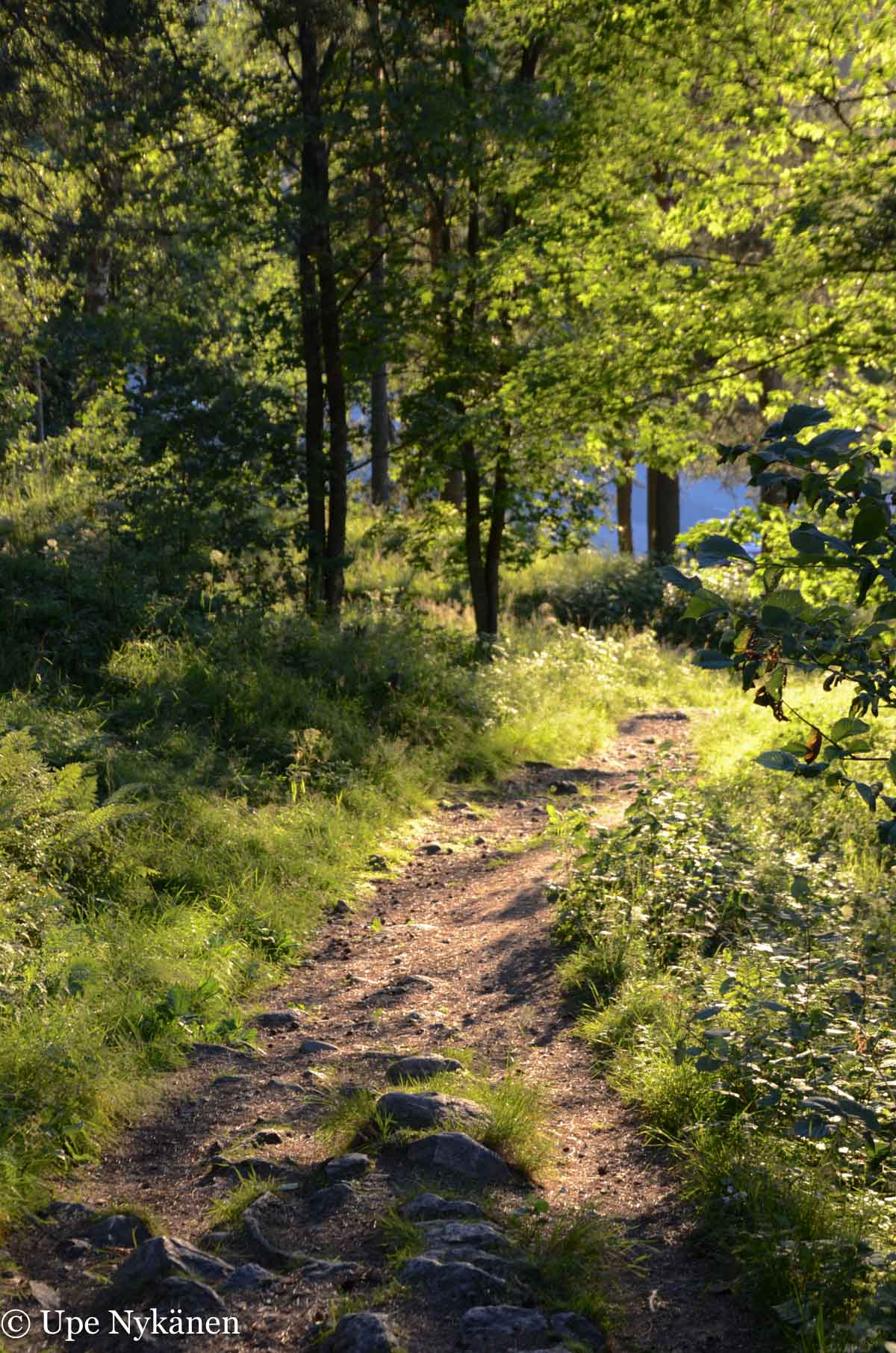
The forest trail descended behind Honkala from Näsi hill down to the side of Old Helsinki Road. Cars rarely passed on the road anymore and the tourist coaches had already left the parking lot, which was by the bridge.
As I walked to the bridge, I stumbled across some living history. A few men and women were dressed in clothes from the 1800s. The travellers in their handsome clothes were not just on an ordinary evening walk, they were returning from a general rehearsal of a play about the 1809 Porvoo state elections.
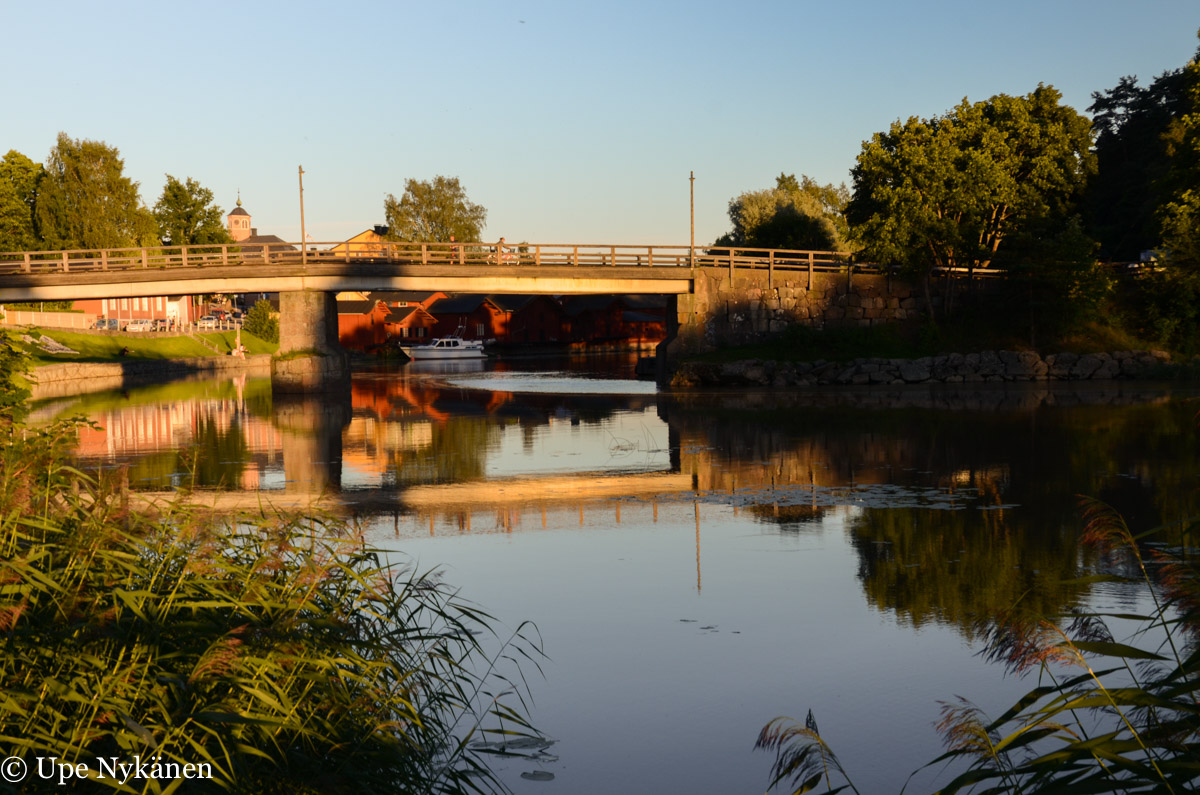
On my return to the Old Porvoo side, immediately after the bridge, I turned into the street on the left heading towards Porvoo’s riverside. The silence of the river was arresting. Not one boat was on the move and there weren’t even any birds swimming around. Where were the kayakers, on such a perfect evening for floating slowly down the river?
A few tourists sat along the riverbank and some locals crossed my path on their evening walk, with dogs and without. Behind the untamed reedbeds glimmered the national landscape, which included the manicured riverbank lawn with it’s flowerbeds, as well as Näsi hill from where I had just come.
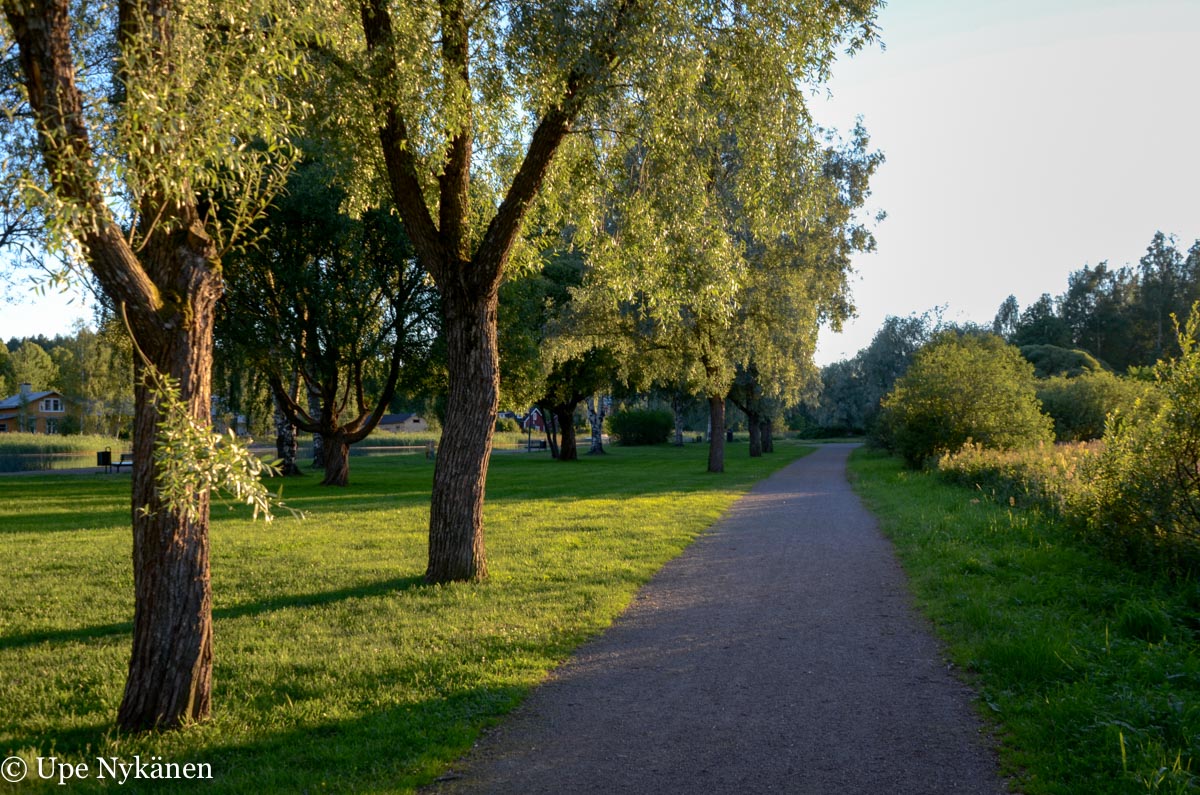
On the other side of Porvoo river, I could make out the wooden railway station. Groomed park avenues with their silver willows are part of the more ‘park’- like elements of the National Urban Park, and I could have continued my journey on this route beyond the river, but from here you can’t see Maari’s wetlands so well. Besides, a neat park avenue feels a little too tame for me, so I decided to deviate towards a slightly wilder looking path.
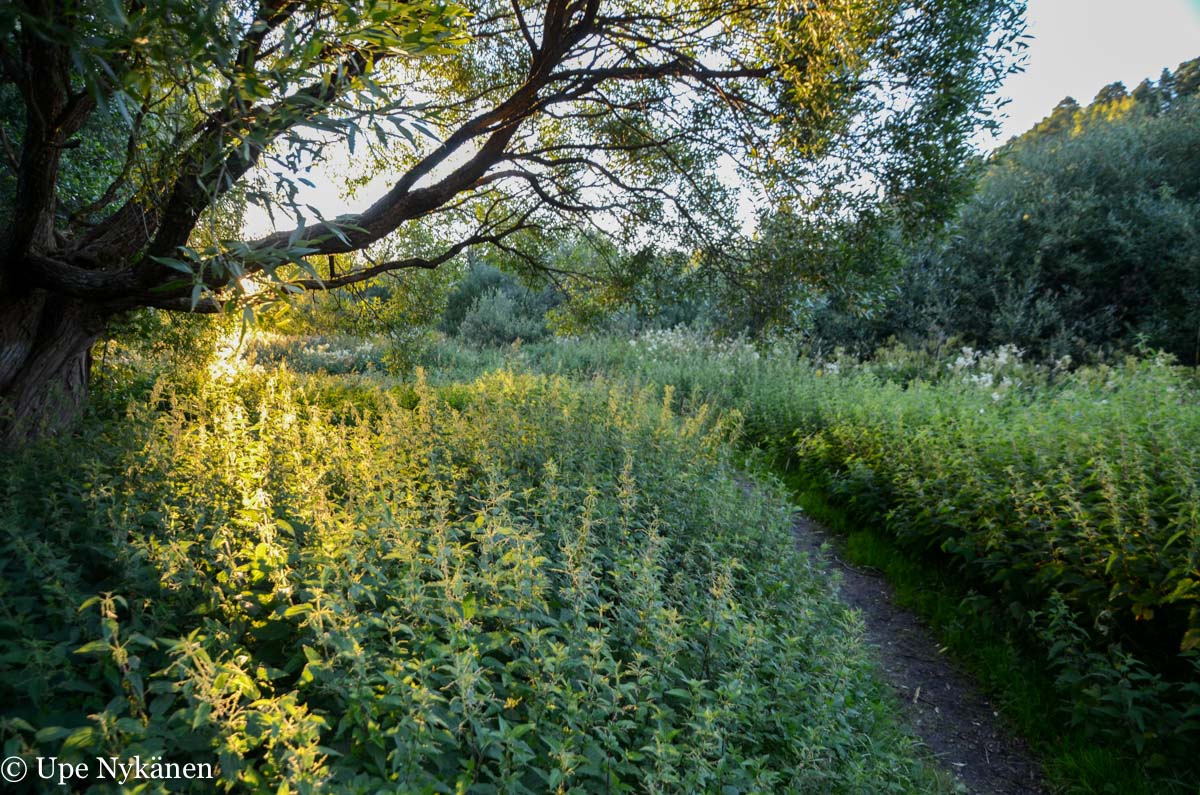
And so I ended up in the midst of a hefty army of stinging nettles on either side of the path… I honestly didn’t even notice at first, as I was so entranced by the light in front, filling my vision with gold. These spinach substitutes shouldn’t, however, be ignored. They are, after all, excellent wild herbs that can be used in all kinds of dishes. So I hadn’t just come to Maari’s wetlands, but also a wild herb garden!
The path led me to a narrow, grey arched bridge, which took me closer to Linnamäki (Castle hill). The landscape in Maari’s bay has changed considerably over the centuries. In the 1100s, the bay was part of Porvoo river and served as a natural harbour. You wouldn’t necessarily guess that now, as the bay is fast becoming overgrown, a result of the land rising and also of nutrients and silt accumulating in in the river.
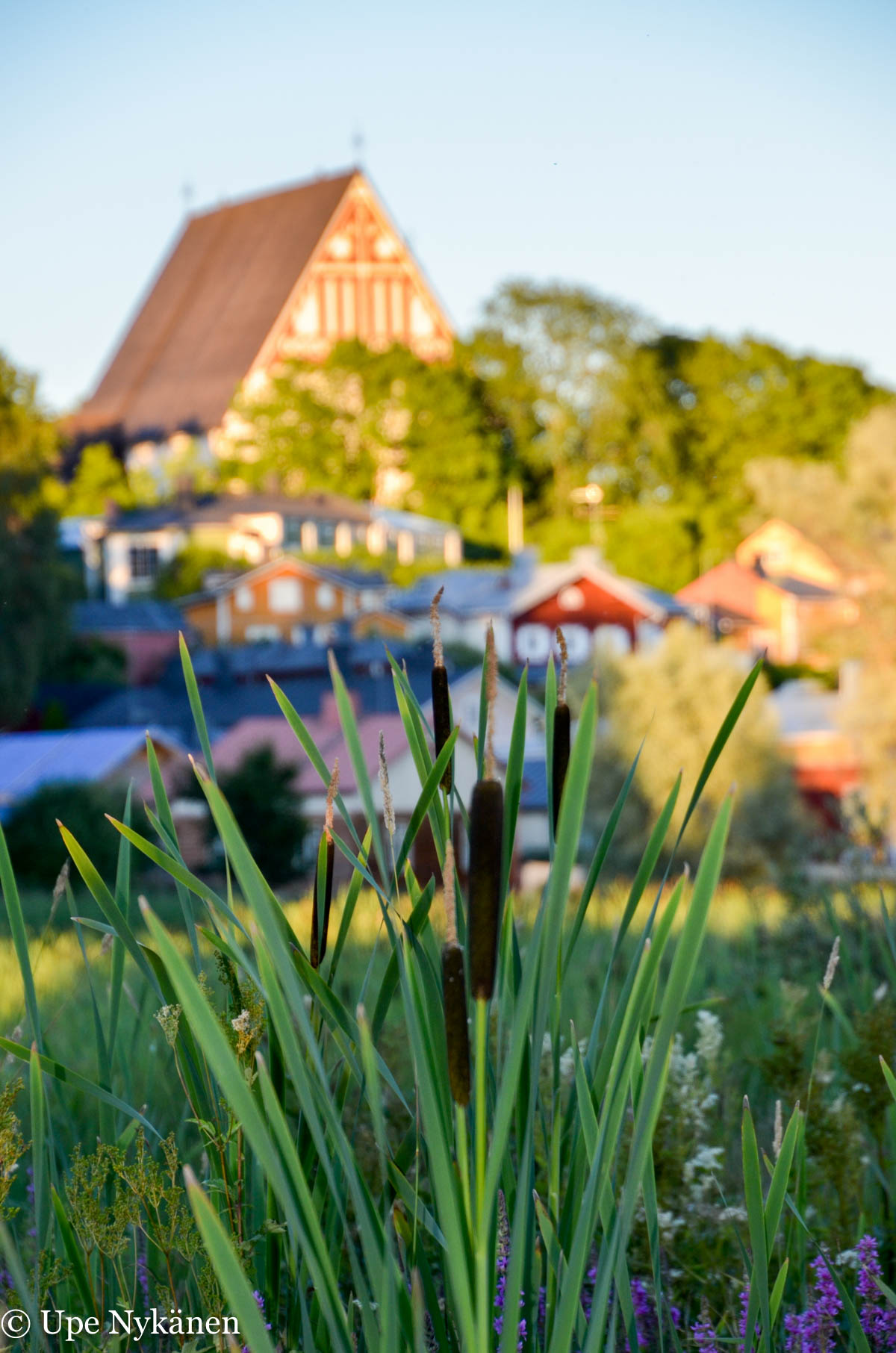
It’s hard to imagine what this looked like when Porvoo city was still young and had a tiny population. In the middle ages, you may also have come across a foreigner shopping in these parts. They could have been, for example, from Estonia. Smaller vessels were able to travel right up to here via Porvoo river, but larger sailing vessels had to be left further away from the river’s mouth.
The velvety surface of chocolate brown cattails were tempting to touch and you could smell the meadowsweet aroma in the warm humidity of the evening. A number of different wildflowers dotted the side of the path, as I continued forward, enraptured again by the view that opened out onto the cathedral. I wish I had a plant expert with me who could identify some of the rarer species amongst all this greenness.
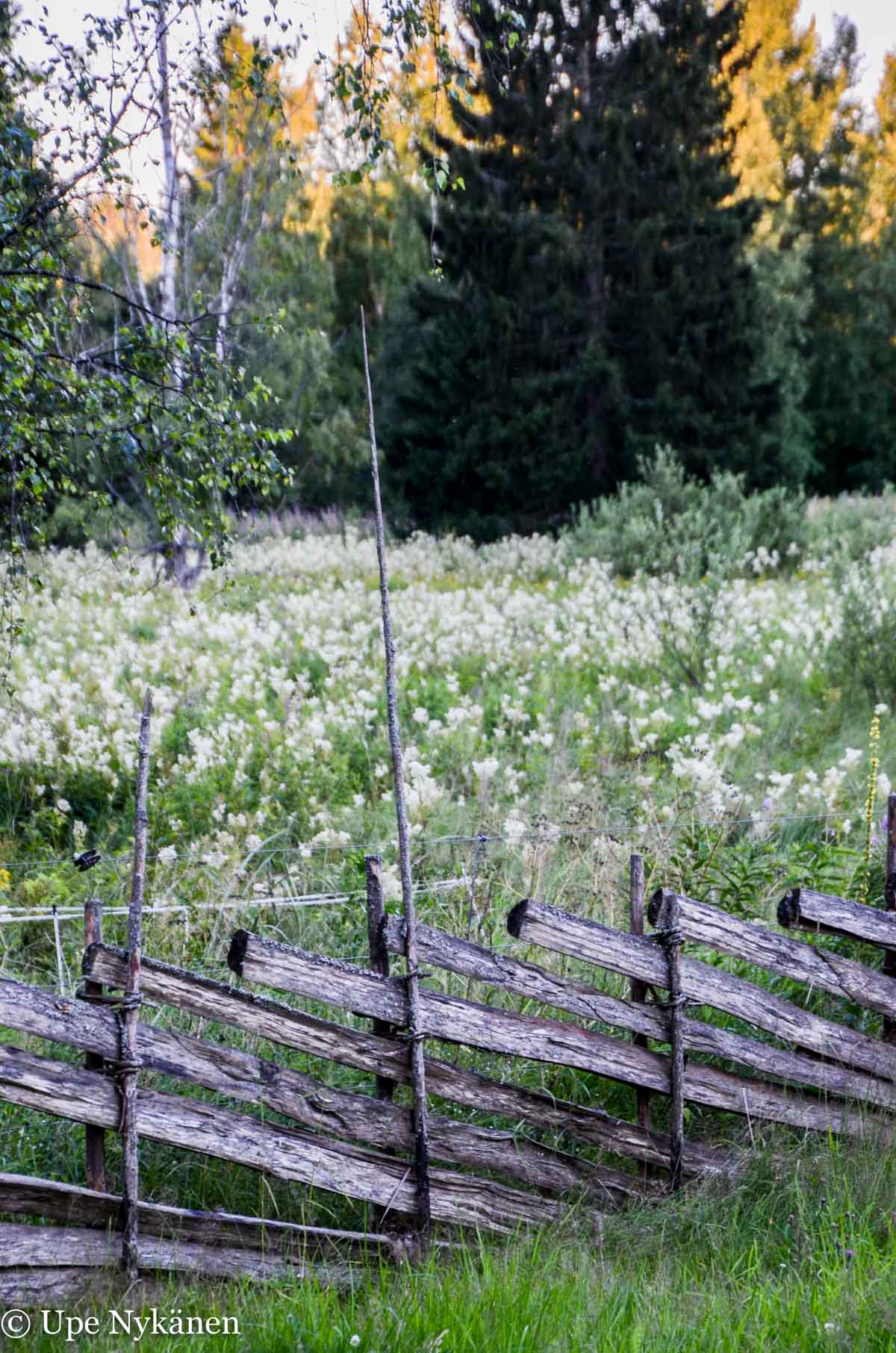
I didn’t take the most direct route up to Linnamäki, but decided to take a small detour around to the left. The meadowsweet meadow was vast. Behind the pole fence I noticed a drinking trough. Could there be some landscaping sheep behind the fence? If there were, they had hidden themselves successfully somewhere amongst the meadowsweet and were lazily neglecting their summer work, for the meadow looked so untrodden.
While looking at the pole fence and this kind of landscape, time somehow stood still. Such a sweet summer evening, fragrances floating in the air, dusk approaching: just as if I was in the countryside. You wouldn’t believe that here we were only about a kilometre from the centre of Porvoo.
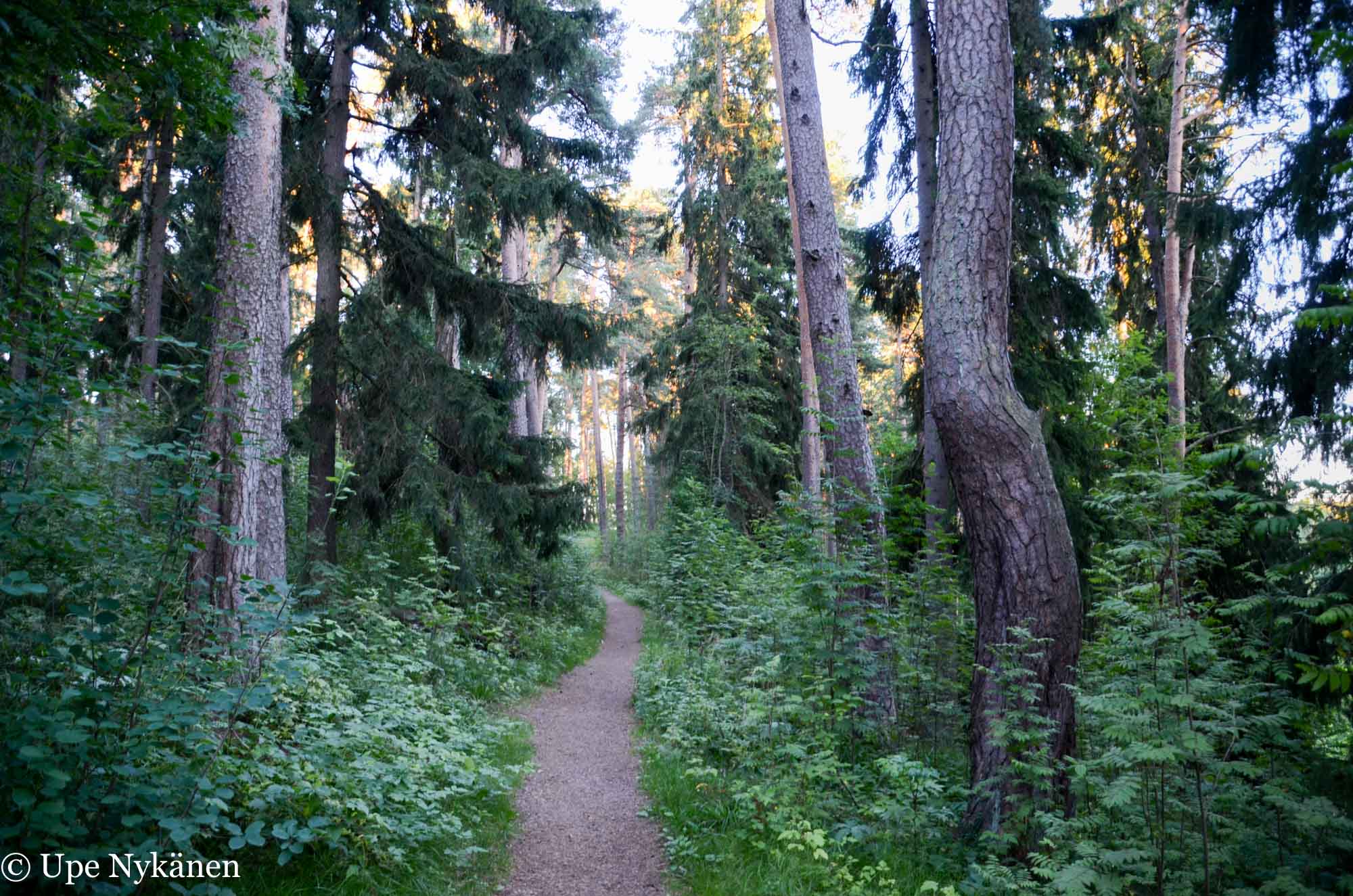
However, I still had one climb left to do, and that was Linnamäki. The trees seemed to grow so densely, that I wasn’t sure would if there be much of a view, but hopefully something worth seeing anyway, A St John’s Cross (a looped square symbol) on the side of the path signalled something promising, that I was reaching a historical place.
Linnamäki (Castle Hill) has been part of forming Porvoo’s name. The city’s Swedish name, ‘Borgå’, means castle river. Now there wouldn’t be a castle river without a castle, which, in the middle ages, would have been right on top of this hill. Porvoo was so important by then that it was the third town to receive city status along with city rights in Finland in 1380, after Turku and Ulvila.
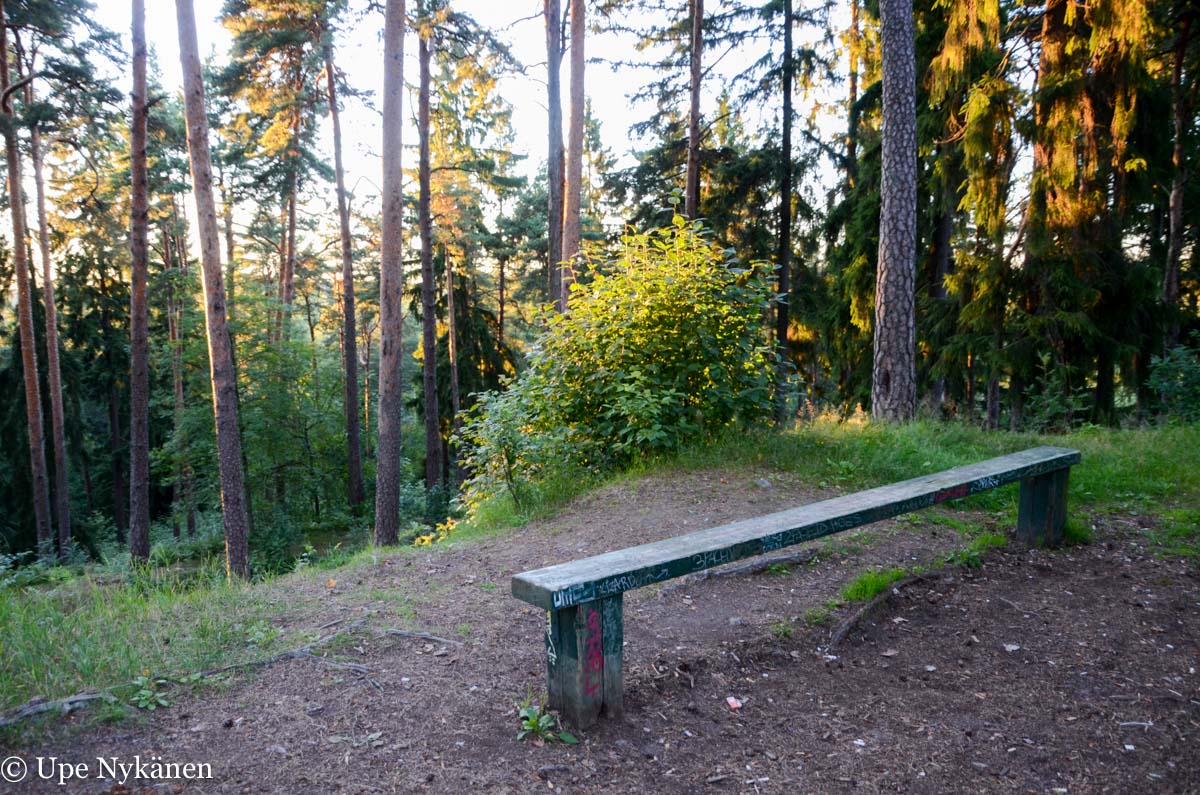
After the trail I still had to climb some steps and cross the moat, but I was already in what would have been the castle area in ancient times. You can sit on the narrow wooden bench here to think deep thoughts, catch your breath or imagine what this all used to look like.
Views from the top of Linnamäki are limited; You can get a better view slightly lower down, on the slope facing downtown. Once upon a time the trees had been sparse enough for Albert Edelfelt to paint his work ‘From Linnamäki’, which, depicted Porvoo as seen from this point. The work is on show at Haiko Manor in the yellow lounge.
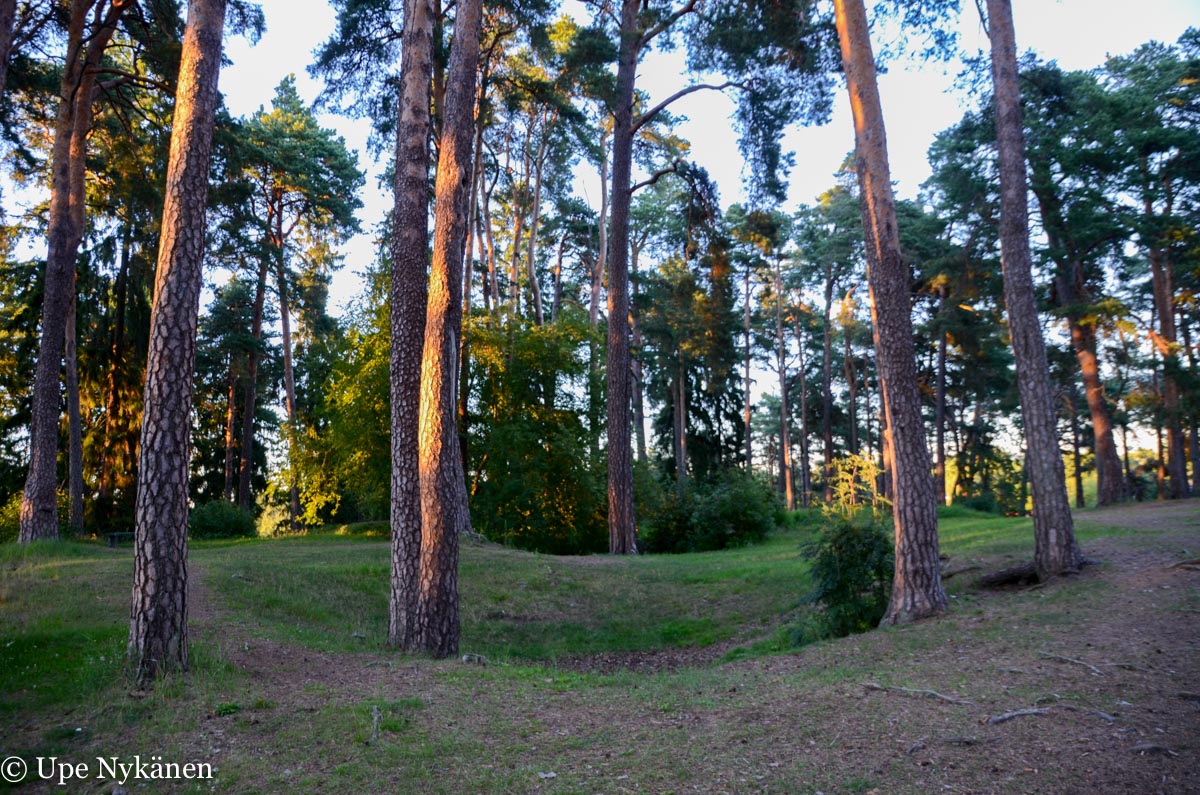
On Linnamäki it’s difficult to let your imagination run wild and immerse yourself in some kind of a castle romance, as there isn’t even a trace of the wooden log structures that once stood here in the middle ages. I walked around the location of the castle and wondered what had been in that pit. How high had the log castle been, what kind of equipment did it have, how many people lived there… History says, that there had already been a building here in Viking times (800-900s), but an official castle was built at a later date for defence. Reportedly the log castle itself was only in use for a few decades.
Before I left, I stopped and looked at the view again. This hill was smiling! The shallow pit formed its own kind of dimple. It was as if it too was enjoying the evening.
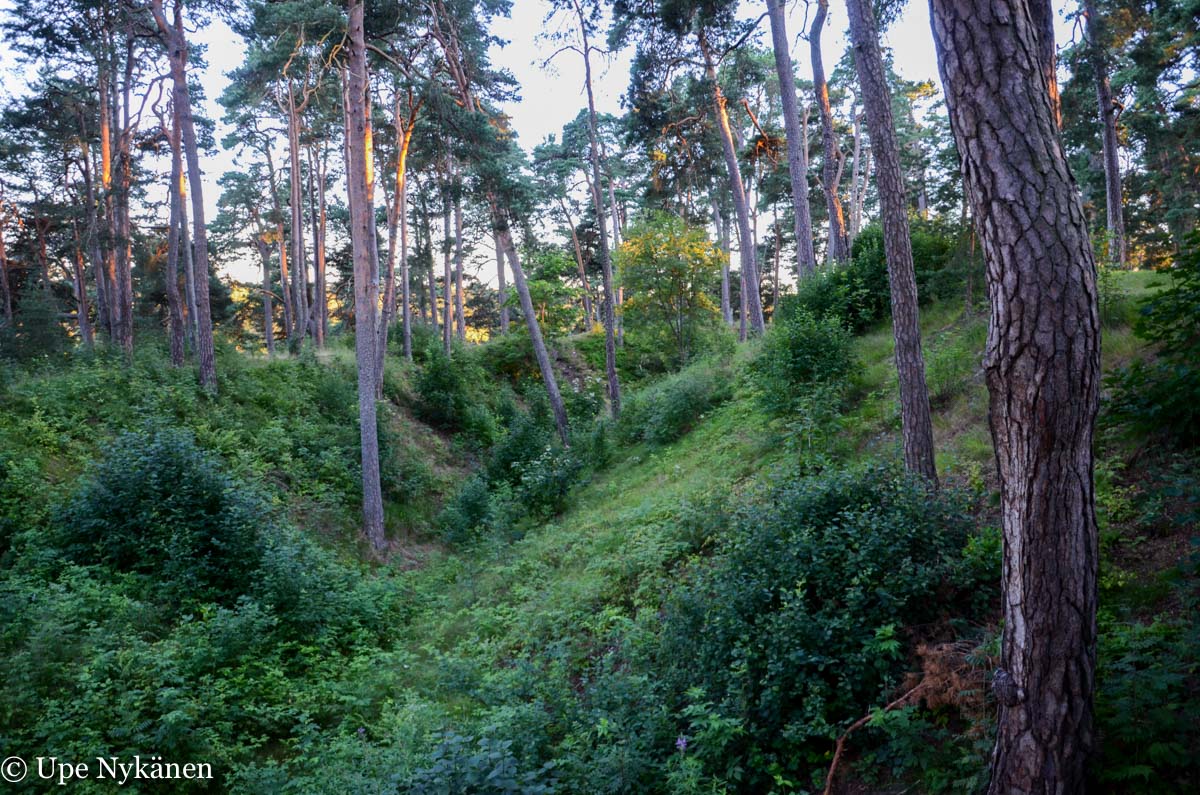
The most exciting thing on Linnamäki was this funny moat, which you could cross from both sides along a wooden bridge. I wonder if at the time a drawbridge or two went over it. Linnamäki is currently in such a wildly natural state, that it feels like only a matter of time until bushes and trees will sprout from the moat, foresting the landscape completely. In Linnamäki’s surroundings, around the smaller hill Pikkulinnamäki, a burial ground dating back to the Roman iron age had been found, as well as bronze jewellery. Linnamäki and its ancient monuments form a fine part of the National Urban Park.
Feeling content, I returned to the cathedral and back to Old Porvoo. My small outing around the park had been an atmospheric and leisurely end to the evening.
Porvoo’s National Urban Park: Maps and route advice
Map (Näsi’s rock) ETRS-TM35FIN -coordinates N 6696091 E 425865
Map (Linnamäki) ETRS-TM35FIN -coordinates N 6696682 E 425741
The writer stayed at Ida-Maria Bed & Breakfast courtesy of VisitPorvoo.fi
Translated by Becky Hastings.

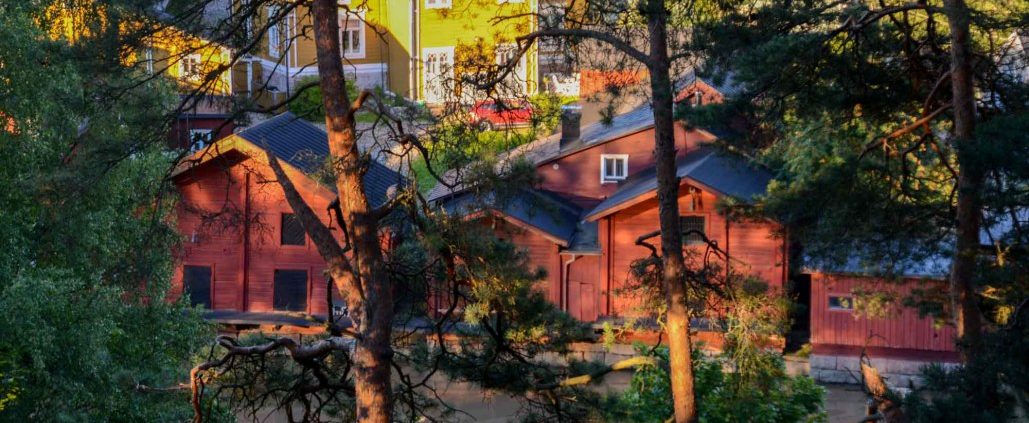



Leave a Reply
Want to join the discussion?Feel free to contribute!